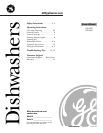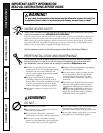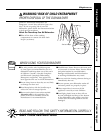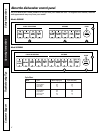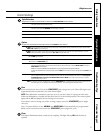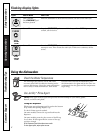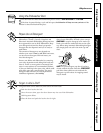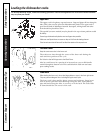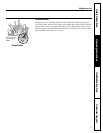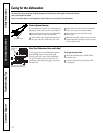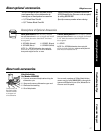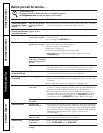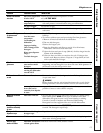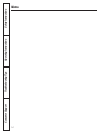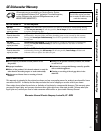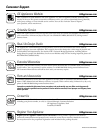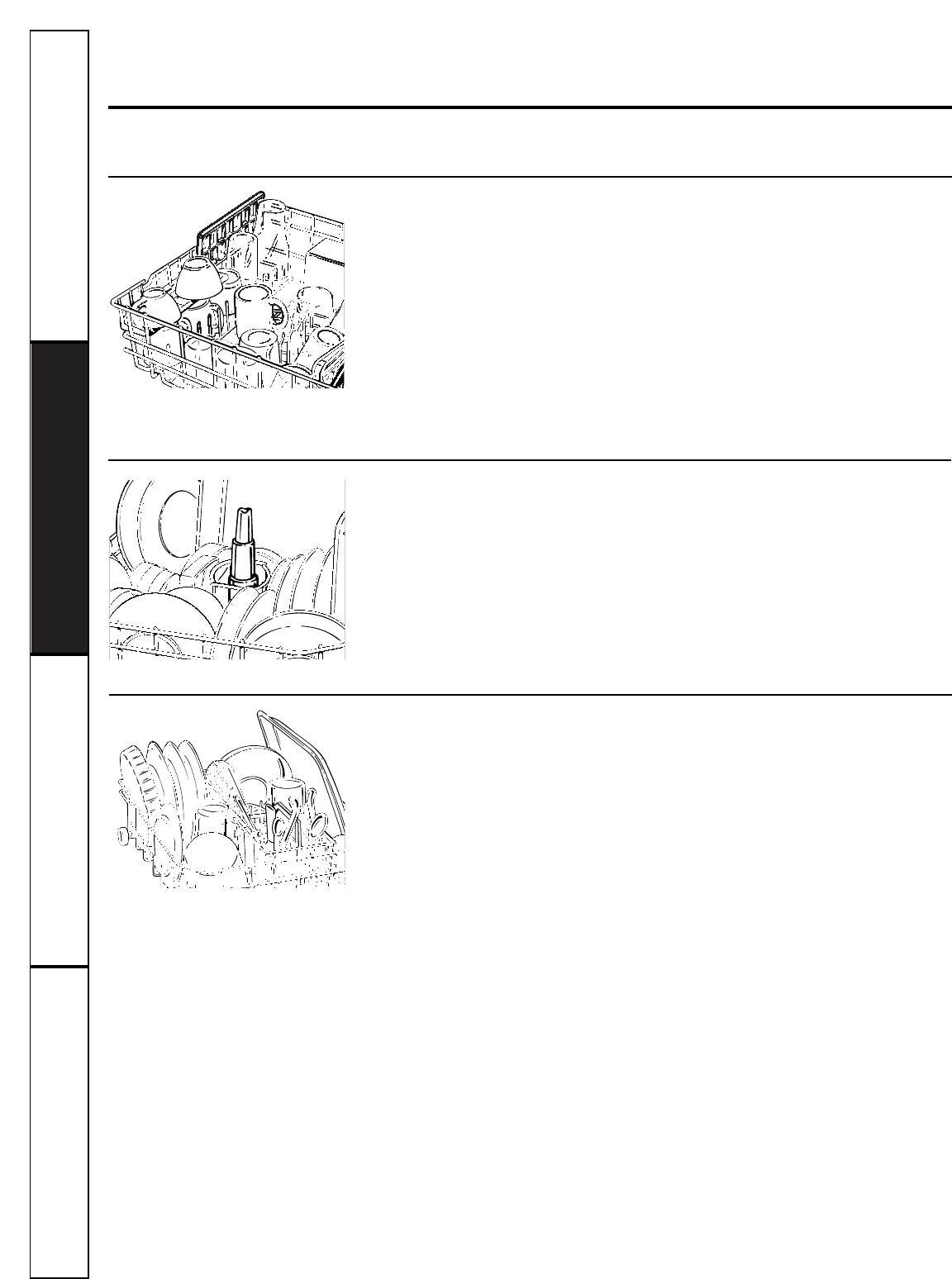
Loading the dishwasher racks.
Operating Instructions Safety InstructionsConsumer Support Troubleshooting Tips
8
For best dishwashing results, follow these loading guidelines. Features and appearance of racks and silverware baskets
may vary from your model.
The Wash Tower
Keep the center area clear in the lower rack.
The wash tower rises through the center of the lower rack during the
wash and rinse portions of the cycle.
Don’t block or load tall things next to the Wash Tower.
Also, be careful not to let a portion of an item such as a pot or dish handle
extend through the bottom rack. This could block the wash arm and cause
poor washing results.
Lower Rack
When loading the lower rack, do not load large platters or trays in the front right corner.
They may prevent detergent from circulating during the wash cycle.
The lower rack is best used for plates, saucers and cookware. Large items
such as broiler pans and racks should go along the sides. Load platters,
pots and bowls along the sides, in corners, or in the back. The soiled side
of items should face the center of the rack.
Upper Rack
The upper rack is for glasses, cups and saucers. Cups and glasses fit best along the
sides. This is also a secure place for dishwasher-safe plastics. The upper rack is
good for all kinds of odd-shaped utensils. Saucepans, mixing bowls and other
items should be placed face down.
The
cup shelf
(on some models) may be placed in the up or down position to add
flexibility.
Secure larger dishwasher-safe plastics over two fingers when possible.
Make sure small plastic items are secure so they can’t fall onto the heating element.
Check to make sure that tall items will not block the rotation of the top wash arm.



